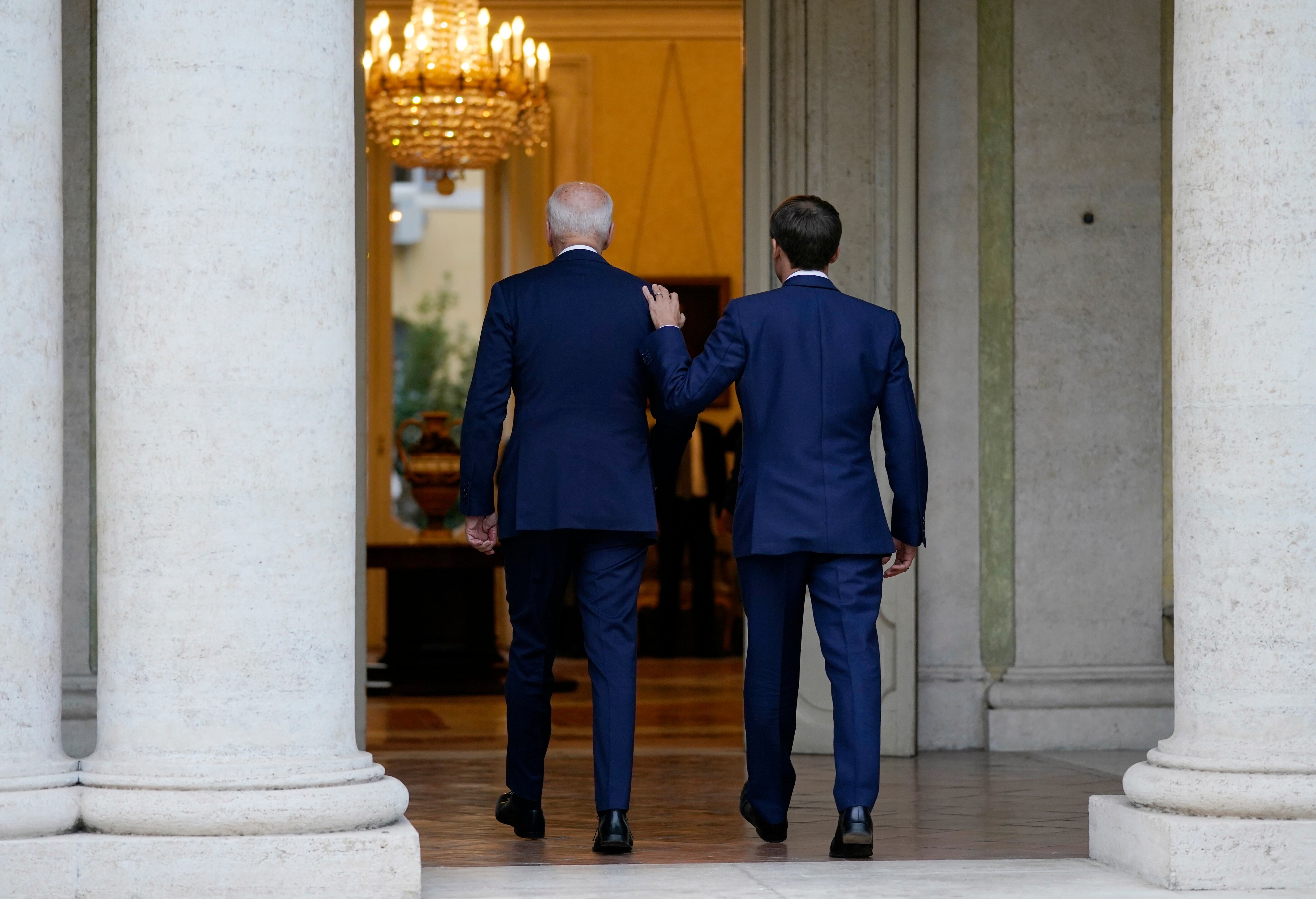WASHINGTON ― The U.S., U.K. and Australia are poised for a major announcement next week in landmark plans to help Australia build a fleet of nuclear-powered subs, but U.S. lawmakers are setting their sights on a part of the pact that’s seen as lagging: technology co-operation.
Senate staffers are expected to press Biden administration officials on the topic Wednesday when the officials brief them on the coming news behind closed doors on Capitol Hill. Tech cooperation, which includes work on hypersonic weapons, quantum technologies and artificial intelligence, is also part of the tripartite agreement known as AUKUS.
House staffers already received an AUKUS briefing last week, but the countries are keeping a tight hold on what capabilities the trilateral agreement will entail. President Joe Biden, Australian Prime Minister Anthony Albanese and U.K. Prime Minister Rishi Sunak are expected to reveal details on AUKUS capabilities and technology sharing on March 13.
While the submarine portion of the pact ― known as Pillar One ― is poised for progress, British and Australian officials have said the U.S. International Traffic in Arms Regulations regime threatens to hamstring the pact’s other tech sharing goals ― known as Pillar Two ― and have called for reforms.
The House Foreign Affairs Committee last week advanced a bill that would add scrutiny on the State Department, ordering it to coordinate with the Pentagon on a report to Congress detailing potential impediments to implementing AUKUS, including ITAR.
The report would include an “average and median time” it took the U.S. government to review arms exports applications to Australia and the U.K. in 2021 and 2022. It also requires a list of “voluntary disclosures” between 2017 and 2022 that have resulted in ITAR violations while trying to export defense articles to either country.
The bill also stipulates that the Biden administration must provide Congress with “an assessment of recommended improvements to export control laws and regulations of Australia, the United Kingdom and the United States that such countries should make to implement the AUKUS partnership.”
RELATED

One of the main disincentives for cooperation with the U.S. is that jointly developed technologies would be subject to America’s strict approvals process, potentially robbing Britain and Australia of vital export opportunities, according to Josh Kirshner, a former State Department defense trade official who is now with Beacon Global Strategies.
Whether the U.S. would allow cooperation with its most important, secretive and potentially most lucrative development efforts, like Next Generation Air Dominance, is also an open question, he said.
Boeing, which is co-developing the MQ-28 Ghost Bat drone with the Australian military, has found that ITAR “doesn’t quite move at the pace we would want it to if we want to out-innovate the Chinese ― even with our closest allies,” its senior director for international operations and policy, Mike Schnabel, said last week at a virtual event hosted by the Center for a New American Security think tank.
Experts warn that speed is a factor in U.S. competition with China, whose president has instructed his country’s military to be ready by 2027 to conduct a successful invasion of Taiwan. Under AUKUS, Australia seeks to acquire nuclear submarines before 2040.
”If Pillar Two fails, AUKUS will be a failure. Plain and simple,” said Bill Greenwalt, a deputy undersecretary of defense for industrial policy in the George W. Bush administration. “The submarine portion will not happen in time to be relevant to a near-term conflict with China. What happens in Pillar Two could be, but only if ITAR is radically changed.”
The Pentagon, for its part, is making a push. According to Ely Ratner, the assistant secretary of defense for Indo-Pacific security, the Biden administration has been making internal progress on export controls and other “antiquated systems that need to be revised,” as the U.S. works to deepen defense ties in the region.
Without detailing the sensitive efforts, Ratner said at a Hudson Institute event in Washington that policy officials have been bending the bureaucracy to yield a “live evolution of processes” for technology sharing, foreign military sales, the defense industrial base and more.
“I would submit that in our closest alliances and partnerships, we’re having much better conversations about issues related to operations and planning and no-kidding defense areas in a way that hasn’t happened previously,” Ratner said.
Today the Biden administration believes it has the legal latitude to share nuclear propulsion technology as the U.S. did with the U.K. in the 1950s. But to fully realize AUKUS it will likely have to come to Congress at some point to address export controls, Rep. Joe Courtney, the top Democrat on the House Seapower and Projection Forces Subcommittee, told Defense News.
Courtney noted that the initial AUKUS announcement in 2021 received a very positive bipartisan response. Still, there’s a thicket of agencies involved in export controls, which means there’s also a thicket of congressional committees that would have to pass any reform legislation.
“We think there’s going to be a need for us to help with the export control issue, but this stuff can get so challenging in terms of multi-committee jurisdiction, and you know, the different levels of certifications by different agencies ― whether it’s Treasury, State, DoD, Commerce,” Courtney told Defense News.
“My strong belief is that we’ve got to sort of come up with a package, stack hands and move out in terms of the legislative process. Whether that’s all going to happen this year in one fell swoop or whether people do it on an incremental basis, I don’t know the answer to that,” he added.
RELATED

As U.S. officials have said they want to share more, Canberra has shown them the information security measures Australia is taking to prevent leaks, Australian ambassador Arthur Sinodinos told the Center for Strategic and International Studies think tank earlier this month.
Sinodios praised progress over the last six months, saying the administration has worked to make a “seamless” transfer of technology easier. U.S. lawmakers are waiting to see how far the Biden administration feels it can go and where legislation would come into play, possibly attached to the annual National Defense Authorization Act, he said.
“The attitude we’ve taken is we want to push the administration process as far as possible,” he said. “The Congress wants to help.”
At the CNAS event, Australia’s first assistant secretary of defense for industry policy, Stephen Moore, said there has been “a frustration, I think, amongst all of us that bureaucratic processes need to be better.”
Speaking alongside Moore, Shimon Fhima, director of strategic programs at Britain’s Ministry of Defence, said that while the political will was “absolutely there, to ensure that the barriers that we have are broken through,” it remains to be seen whether the will also exists at the institutional levels.
“The willingness to share really sensitive technologies and capabilities in Pillar One; if we can do that, and we can do that at pace, we must be able to do that in Pillar Two,” Fhima said.
Joe Gould was the senior Pentagon reporter for Defense News, covering the intersection of national security policy, politics and the defense industry. He had previously served as Congress reporter.
Bryant Harris is the Congress reporter for Defense News. He has covered U.S. foreign policy, national security, international affairs and politics in Washington since 2014. He has also written for Foreign Policy, Al-Monitor, Al Jazeera English and IPS News.







